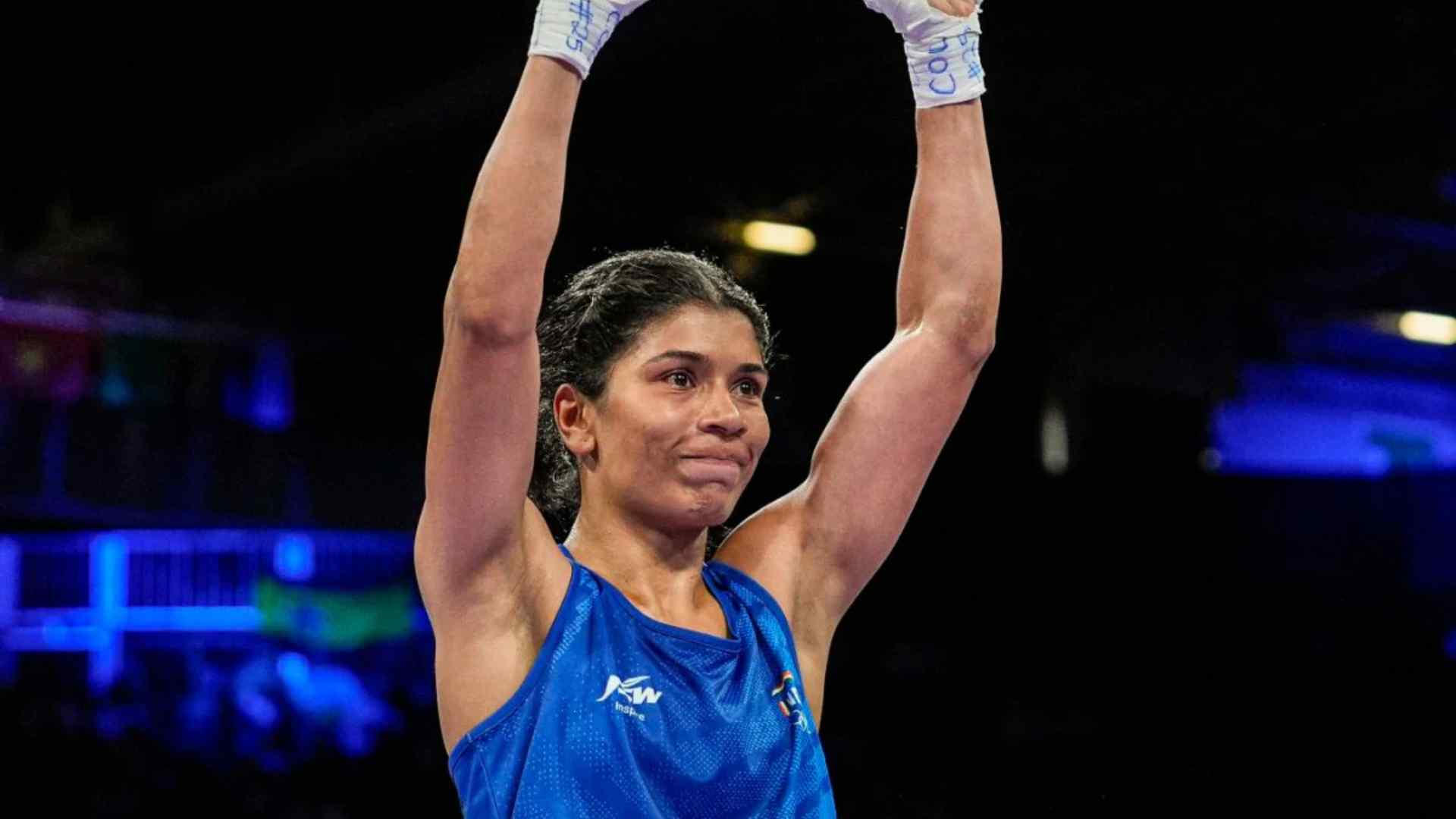How can one manage weight cuts in Combat Sports and MMA? In most sports and the fitness industry, the common say is “the leaner the better” or much rather the fad of “single-digit body fat percentage”. So what does it all mean? Why it is much harder in certain sports than in others to balance this bodyweight and what is weight cycling? Here's everything you need to know
What is Body Composition?
Body composition is a figurative way of explaining in percentages as to how much water, bone, muscle and fat is present in your body. There are three types of fat in the body.
|
Types of Fat in the Body |
|||
|
|
Stored in |
Men |
Women |
|
Essential Fat |
Major organs & bones |
3% |
3% |
|
Sex-Specific Fat (In women) |
Breasts, hips & pelvis |
- |
12% |
|
Storage Fat |
The subcutaneous layer used as a substrate for metabolism |
12% |
15% |
|
Total Fat % |
|
15% |
22 – 27% |
|
Low reference body fat% |
For normal functioning of the body |
5% |
12% |
|
In adolescents |
7% |
14% |
|
|
Should not exceed |
|
22% |
32% |
Weight Sensitive Sports
Body composition is an important factor relating to the performance more for certain sports than others, these sports are divided into 3 main classifications:
- Weight class sports – where only certain bodyweight is allowed to compete in order to maintain equality and fair play (combat sports, weight lifting, lightweight rowing, horse racing and sprint football)
- Gravitational sports - wherein lightweight is advantageous to move against gravity and spend longer time off the ground (skiing, jumping, running and cycling)
- Aesthetic sports – where body shape is important and judged (gymnastics, diving, synchronised swimming figure skating and cheerleading)
Weight – Class Sports
Most combat sports follow a weight class system, meaning the opponents are divided into categories of body mass or body weight in order to ensure fair play and so the matches are equitable in terms of body size, strength and agility. It is a common practice across combat sports to train heavy and play light in an attempt to get an advantage of competing against a lighter, smaller and weaker opponent. This weight loss may range from 2-10% of their base body weight.
The Weight Cut of Conor McGregor was extreme at times
Certain sports (Taekwondo, Judo, and Wrestling) have a larger gap in their weight class categories compared to others such as Boxing and MuayThai. Few athletes may also adjust their weights according to types of weight class categories (for e.g. Taekwondo the international weight class categories are 8 compared to the categories followed in Olympics being 4, wherein 2 categories would combine).
Athletes are typically unable to maintain their body weight at the said range and normally regain weight following the weigh-in making it necessary for them to reduce the weight before the next weigh-in. This pattern of loss and gain in weight gives them the term of “Weight cyclers”. Weight Cycling or yo-yoing of body weight is a strategy fighters learn to adapt early on in adolescence, earliest being reported at the age of 7 years. (Time to ban RWL). There are two ways of Weight Cycling; gradual or seasonal weight loss (> 4 days) and rapid or acute weight loss (<4 days).
What is the problem with rapid weight loss?
Over few years Sports medicine bodies have been reportedly advising the ban of the process Rapid Weight Loss and considering it as a form of doping strategy to enhance performance. It all started with deaths in wrestlers due to severe dehydration and hyperthermia after which strict rules were set in place regarding allowing athletes to participate only if certain criteria were met. These rules have not been set in other combat sports but enough importance in levied on creating awareness regarding the matter. There have been speculations that the dehydration caused due to the several weight loss strategy may make the athlete more at risk of suffering a concussion.
Strategies of Weight Cut
|
Dietary Restrictions |
Active dehydration |
Passive dehydration |
|
|
|
Impact of Rapid Weight Loss and how Rapid Weight Loss Affects performance?
Rules regarding the time of weigh-in differ across combat sports, the time span between weigh-in and fight may range from 2 – 12 hours. This time frame allows the athlete to recover and fuel themselves before the fight. There are several strategies used for rapid weight loss and with the time frame, maximum weight loss is water loss.
Physiological effects of rapid weight loss
- Decreased plasma volume because of dehydration – reduced cardiac output which in turn reduces blood circulation
- Increased heart rate
- Impaired thermoregulatory process with an increased risk of overheating
- Worsened circulatory and respiratory function
- Decreased renal blood flow
- Reduction of glycogen stores causing reduction on muscle strength
Psychological effects of rapid weight loss
- Decreased short term memory, vigour, concentration and self-esteem
- Increased confusion, rage, fatigue, depression and isolation
- Frequent dietary intake and caloric restriction predisposes athletes to have subclinical eating disorders.
- 10 - 20% have reported inability to control whilst eating which increases 30 – 40 % post-competition
- Body Image & Eating Disorders like binge eating, anorexia and bulimia are not only seen in females but in males as well.
Performance-related effects of rapid weight loss
Several studies have shown that there is very little or no effect of rapid weight loss on performance. A study evaluating body weight at the time of weigh-in and pre-fight weight had an average difference of approximately 1kg with no evident difference between medallists and non-medallists in Taekwondo.
Effect of energy substrate change on performance
However, the theory of adverse effect to the performance is based on inducing fatigue in the excitation-contraction coupling in the muscle cells due to reduction in the glycogen substrate.
Carbohydrates the powerhouse of the body get stored in the body in 3 forms: muscle glycogen, blood sugar and liver glycogen. In conditions wherein immediate high source of energy is needed like in a 3-minute bout of fight the body relies on muscle glycogen. Acute dietary restricts the replenishment and recovery of these substrates. Excitation – Contraction coupling is a mechanism by which the muscle uses the energy in order to create the muscle contraction which results in movement.
Long periods of low carbohydrate intake increases the body’s reliance on proteins as their source of metabolism, this in turn again down-regulates the mechanism by which anaerobic energy is obtained which impairs high-intensity exercise performance.
Effect of hydration on performance
|
% of dehydration |
Effect on performance |
|
2- 3% |
Decreased reflex activity, maximum oxygen consumption, physical work capacity, muscle strength and muscle endurance and impairs temperature regulation |
|
4 – 6% |
Further deterioration in maximum oxygen consumption, physical work capacity, muscle strength and endurance time, temperature regulation becomes severely impaired |
Athletes resort to active or passive methods for dehydrating the body which may be up to 1litre. Sports like wrestling and MMA have started evaluating minimum hydration levels after weigh-in; urine specific gravity should be less than 1.020 or the colour of urine less than or equal to 4. The assessment of hydration is repeated after 24 hours if criteria are not met.
About the Author: Prachi Shah
Prachi Shah is a physical therapist specialized in sports and dance-related injuries. She was a National team physical therapist for Taekwondo for the South Asian Games, 2016 and Asian Championship and Rio Olympic Qualifiers, 2016 and national camp for Boxing (Youth). Currently working as a consultant therapist at Proformance Physical Therapy and Sports Rehabilitation Centre and associated with Muay-Thai Association, Maharashtra. You can follow Prachi on Instagram by clicking here.








Leave a comment
Please login to leave a comment.